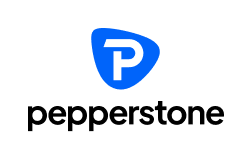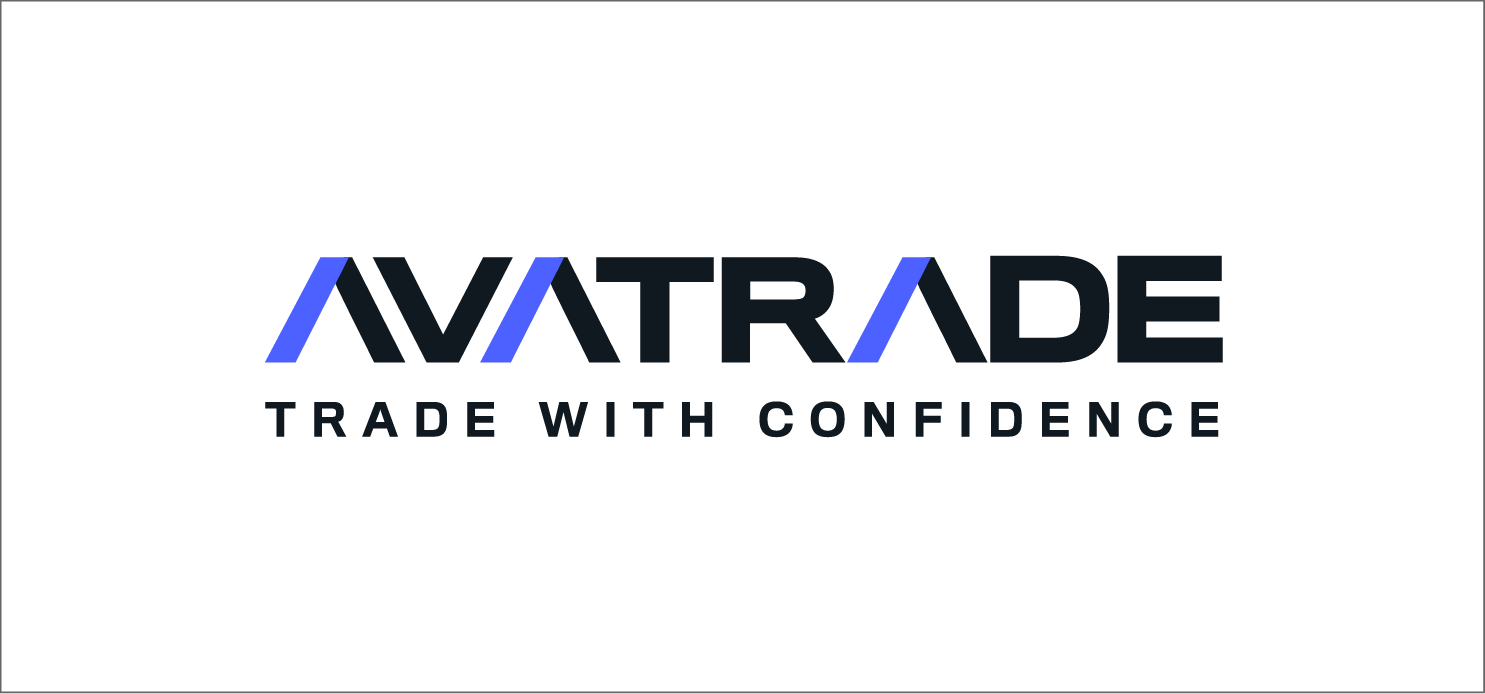The Best 11 NAS100 Brokers in 2026
All products and services featured are independently selected by WikiJob. When you register or purchase through links on this page, we may earn a commission.
- List of Top 11 NAS100 Brokers for January 2025
- Comparison Chart of Top 11 NAS100 Brokers for January 2025
- Description of the Best NAS100 Brokers for January 2025:
- What Is NAS100?
- Reasons to Trade NAS100 in 2025?
- Key Factors to Consider When Choosing a NAS100 Broker
- How to Trade the NASDAQ Index?
- What Is the Difference Between NASDAQ and NYSE?
- What Is the Difference Between S&P and NASDAQ?
- Frequently Asked Questions
- Final Thoughts
List of Top 11 NAS100 Brokers for January 2025
Here are our top picks:
- Plus500 – Easy to Use NASDAQ 100 CFD Broker
- Pepperstone – Best Broker to Trade NAS100 with No Minimum Deposit
- eToro – One of the Top NAS100 Brokers Regulated by FCA
- AvaTrade – Among the Leading Brokers with NAS100 on MT4
- IG – One of the Best NAS100 CFD Brokers
- Vantage Markets – One of the Top NASDAQ Brokers with Meta Trader Add-ons
- Saxo – Best range of instruments
- XTB – One of the Best NASDAQ 100 Brokers with Low Forex Fees
- Moneta Markets – NAS100 Broker Regulated by CIMA
- Freedom24
- ActivTrades – One of the Best Brokers with NAS100
Comparison Chart of Top 11 NAS100 Brokers for January 2025
Regulation FCA, ASIC, CySEC, MAS, FSCA, FMA, FSP | Minimum Deposit | Customer Service 24/7 (Live Chat, Email, Phone) | |||
Regulation FCA, DFSA, CySEC, BaFIN, ASIC, CMA, SCB | Minimum Deposit None | Customer Service 24/5 (Live Chat, Email, Phone) | |||
Regulation ASIC, FCA, CySEC, FinCEN (USA) | Minimum Deposit $50 | Customer Service 24/5 (Live Chat, Email, Phone) | |||
Regulation ASIC, FSCA, B.V.I FSC, Central Bank of Ireland | Minimum Deposit $100 | Customer Service 24/5 (Live Chat, Email, Phone) | |||
Regulation FCA | Minimum Deposit $250 | Customer Service 24/7 (Live Chat, Email, Phone) | |||
Regulation Not specified | Minimum Deposit $200 | Customer Service 24/5 (Live Chat, Email, Phone) | |||
Company Saxo | Regulation FCA, FSA, MAS, ASIC, FINMA, ACPR, JFSA, SFC | Minimum Deposit None | Customer Service Live chat, phone, email (variable times) | ||
Regulation FCA, KNF, CySEC | Minimum Deposit $250 | Customer Service 24/5 (Live Chat, Email, Phone) | |||
Company Moneta Markets | Regulation ASIC, VFSC | Minimum Deposit $200 | Customer Service 24/5 (Live Chat, Email, Phone) | ||
Regulation FCA, CySEC | Minimum Deposit $100 | Customer Service Varies | |||
Company ActivTrades | Regulation FCA, DFSA, SCB, FSC | Minimum Deposit $100 | Customer Service 24/5 (Live Chat, Email, Phone) |
61% of retail investor accounts lose money when trading CFDs with eToro. You should consider whether you understand how CFDs work, and whether you can afford to take the high risk of losing your money.
Description of the Best NAS100 Brokers for January 2025:
1. Plus500
Pros
- No buy/sell commissions and tight spreads
- Leverage of up to 1:30
- FREE unlimited Demo
- 2,800+ trading instruments
- Real-time quotes and advanced analytical tools
- Fast and reliable order execution
Cons
- No API integrations
- No social copy trading
Best for: Ease of use and user experience
Plus500 instruments are available for trading exclusively via CFDs and the service offered on the platform is CFD-based.
Plus500 is a well-known online trading platform that provides access to various financial instruments, including indices like NAS100.
Plus500 has one of the best mobile trading platforms, with the web version following close behind. There is no desktop app.
It trades only in CFDs, with fees sitting in line with industry averages.
CFDs allow you to speculate on the price movements of the NAS100 index without owning the actual underlying assets. This means you can potentially profit from both upward and downward price movements.
Fees are charged for the following:
- Overnight funding – When holding a position after a certain time.
- Currency conversion fee – For all trades on instruments in different currency to your home currency.
- Inactivity fee – Up to USD 10 per month if you do not log in to your account for a period of 12 weeks.
- Guaranteed stop order fees
- Regulated by CySec, FCA, ASIC, MAS, FSA, EFSA, DFSA.
There is 24/7 support with Whatsapp, email and a live chat function.
$100 minimum deposit is required, and there are inactivity charges.
2. Pepperstone
Pros
- Extensively regulated
- No minimum deposit
- Low fees and mostly free withdrawals
- Good customer service
Cons
- No investor protection for clients outside UK, EU and EEA
- Withdrawal fee for international bank wires
- CFDs only
Best for: Forex traders and customer service
Pepperstone is a well-established forex and CFD broker that offers a variety of trading instruments, including the NASDAQ 100 (Nas100) index CFD.
There is no minimum deposit, and Pepperstone offers low CFD trading fees.
As a platform, it is customizable and easy to use.
Pepperstone offers trading ideas and some market analysis, but the research tools are basic compared with other platforms.
Educational tools include:
- Demo account
- Trading glossary
- Wide range of videos and articles
3. eToro
The below content does not apply to US users
Pros
- Regulated by FCA, MiFID, ASIC
- No withdrawal fee for US clients
- 0% commission on stocks
- Social and copy trading
Cons
- Not available in every US state
- More expensive than most of its competitors
- No MetaTrader platforms
Best for: Social trading
Founded in 2007, eToro is considered a very low-risk broker as it is highly regulated by the Financial Conduct Authority (FCA) in the UK and many other regulatory bodies elsewhere.
eToro offers the ability to trade the NASDAQ 100 (Nas100) index as a Contract for Difference (CFD) on its platform.
When you trade the Nasdaq 100 CFD on eToro, you are speculating on the price movements of the index without owning the underlying assets.
eToro has a minimum deposit of $50 and offers average fees for CFD trading – 2.4 points.
eToro’s USP is its social trading function, which allows the user to copy another trader’s trade. A useful tool for those who are new to trading or wanting to learn good trading habits.
The function also allows you to showcase your trading skills. If you are looking to establish yourself as a professional trader, this is the platform for you.
To find out more, read our eToro review.
61% of retail investor accounts lose money when trading CFDs with eToro. You should consider whether you understand how CFDs work, and whether you can afford to take the high risk of losing your money.
4. AvaTrade
Pros
- Worldwide regulated
- Multiple platforms – MT4, MT5, etc.
- Negative balance protection
- 20% welcome bonus
- Educational content
- Wide rage of payments methods
- Fixed spreads
Cons
- You can’t buy stocks
- Quarterly and annual inactivity fees
- Custumer support is not available 24/7
- No bonus for EU based clients
- No US clients accepted
- Imitated crypto assets
Best for: NAS100 on MT4
AvaTrade is a CFD Regulated broker with +1,000 financial instruments and multiple trading platforms. It has been operating since 2006.
Mínimum deposit of $100, no withdraw limit and no fees.
AvaTrade provides access to a wide range of financial instruments, including the Nasdaq 100 index CFD. This allows you to diversify your trading portfolio and take advantage of opportunities in global markets.
AvaTrade's trading platform provides advanced charting tools, technical indicators and real-time data for analyzing the Nasdaq 100 and making informed trading decisions.
AvaTrade provides educational materials, webinars and resources to help traders learn about trading strategies, market analysis and more. This can be especially valuable for those looking to trade the Nasdaq 100 effectively.
The Nasdaq 100 is composed of some of the largest tech companies in the world, leading to potentially significant price movements. This volatility can present trading opportunities for skilled traders.
5. IG
Pros
- Highly regulated
- MetaTrader 4 (MT4)
- Over 10,000 instruments
- Available in the UK and US
- 24/7 customer support
Cons
- High fees
- No deposit compensation scheme for US accounts
- No copy trading
- Inactivity fees
Trading the Nasdaq 100 CFD with IG provides access to a well-established trading platform, advanced charting tools, real-time data, and other features that can assist you in analyzing and executing trades on the index.
IG offers a diverse range of financial instruments, including the NAS100 index. This allows you to access multiple markets and potentially diversify your trading portfolio.
IG is regulated by reputable financial authorities, which can provide a sense of security for your funds and trading activities. Regulation ensures that the broker adheres to industry standards and follows certain guidelines.
IG typically offers educational resources, such as webinars, articles, and tutorials. These resources can help you improve your trading skills and stay updated on market trends.
Good customer support is crucial for any trading platform. IG often provides responsive and helpful customer service to address your queries and concerns.
IG has a global presence, which can be advantageous if you're interested in trading NAS100 from various regions around the world.
24/7 excludes the hours from 10 pm Friday to 8 am Saturday (UK time), and 20 minutes just before the weekday market opens on Sunday night.
6. Vantage Markets
Pros
- Regulated by FCA, ASIC and VFSC
- Low forex fees
- No inactivity fee
- No withdrawal or deposit fee
- Good MetaTrader add-ons
- Social trading
Cons
- Not available to US clients
- CFD trading carries risk
- $50 is needed to start trading
Best for: NASDAQ with Meta Trader Add-ons
Vantage Markets was founded in 2008 to be a transparent forex broker and has grown to include 40+ forex pairs and over 1,000 different assets including EFTs.
As a broker, Vantage Markets is well-regarded and considered safe thanks to regulation by ASIC, FCA and VFSC.
Vantage Markets offers access to the markets through the popular MT4 and MT5 platforms, and a feature-stuffed mobile app.
There are three account types:
- Standard STP: Perfect for novices, this is a no-commission account that works across all trading instruments, with a minimum spread of 1.0 pips. The minimum deposit is $50.
- Raw ECN: Designed for more experienced traders, this account charges commission at $3 per lot per side but the spreads start at 0.0 pips. The minimum deposit is $500.
- Pro ECN: This is for professional, high-volume traders, and offers commission at $1.5 per lot per side, with spreads from 0.0 pips. The minimum deposit is $20,000.
Vantage Markets is seen as a good, reliable broker that offers social and copy trading – without being prohibitively expensive in terms of non-trading costs or commission.
Vantage Markets offers access to the most liquid stock exchange indices including NAS100. The spreads offered on NAS100 are on average $0.80 and can be as low as $0.40 during the UK/US sessions. Trading can be performed through the MT4 or MT5 account, with leverage up to 0:500 and just a $200 minimum deposit.
7. Saxo
Pros
- Heavily regulated
- Good product portfolio
- Low forex fees
- No withdrawal or inactivity fees
Cons
- Does not accept US clients
- High fees for options, futures and bonds
Saxo stands out as one of the best NAS100 brokers, offering an impressive array of trading instruments and a robust trading platform that caters to a variety of financial markets, including forex, CFDs, futures, commodities, and more.
Saxo provides a broad selection of trading instruments. For NAS100 index traders, Saxo offers direct exposure through CFDs, which are part of over 8,000 instruments available on the platform. This includes indices, where traders can find tight spreads and low commissions, enhancing the trading experience and profitability.
For NAS100 index traders, Saxo’s competitive entry prices are particularly advantageous. Tight spreads start as low as 0.4 pips for major FX pairs, which reflects Saxo’s pricing competitiveness across its offerings. Additionally, active traders benefit from even lower rates, making it an attractive option for those who trade frequently.
Saxo’s trading platform is designed to cater to the needs of advanced traders who require a range of tools and features. This includes options for futures trading on the NAS100 and other indices, where traders can access more than 250 futures from 25 global exchanges. The platform's integration of advanced tools like futures spread trading and depth trader enhances decision-making capabilities.
With tier-1 liquidity, Saxo provides higher fill rates, which are crucial for trading indices like the NAS100. This ensures fewer premature stop-outs and significant price improvements, which can greatly affect the outcome of high-volume index trading.
Saxo incorporates robust risk management tools that allow traders to manage their exposure effectively, especially important in the volatile environments often encountered in index trading. This includes options to set stops and limits and the ability to monitor positions closely via the platform.
Saxo caters to traders around the globe by offering the flexibility of extended trading hours. This feature is particularly beneficial for NAS100 traders who may wish to capitalize on market movements that occur outside of standard trading hours in the U.S.
For those looking to keep a pulse on market dynamics, Saxo’s "Market Movers" feature provides insights into the day's biggest gains and losses across various markets, including indices like the NAS100. This can help traders gauge market sentiment and make informed trading decisions.
8. XTB
Pros
- Regulated by the FCA
- Low forex fees
- Fast withdrawal and deposit with no fee
- Live chat customer service
Cons
- No US clients
- Limited product portfolio
- High fees for stock CFDs
Best for: Low forex trading fees
XTB is considered a reputable broker with a range of offerings that can be suitable for trading NAS100.
XTB provides access to a variety of financial instruments, including indices like NAS100. This can allow you to diversify your trading portfolio.
XTB’s web, desktop and mobile trading platforms are all user-friendly with good customization.
It trades in forex and CFDs with generous forex fees but high CFD fees.
There is no minimum deposit, and account opening is quick and easy – some European countries require further verification.
Research and education tools are excellent, with a demo account to get you started and plenty of different learning products.
Having survived the last global recession, XTB is considered safe and reliable. It is also transparent with its financial statements.
CFDs are complex instruments and come with a high risk of losing money rapidly due to leverage. 69-80% of retail investor accounts lose money when trading CFDs with this provider. You should consider whether you understand how CFDs work and whether you can afford to take the high risk of losing your money.
9. Moneta Markets
Pros
- Regulated by CIMA
- Negative balance protection
- No deposit fees
- Low minimum deposit
- MetaTrader 4 and PRO Trader platforms
- No inactivity fee
Cons
- No customer support during weekends
- Educational and research content not as strong as others
- No US clients
Best for: Regulated by CIMA
Moneta Markets was founded in 2009 and is regulated by ASIC and FCA. With Moneta Markets, users can trade forex as well as indices, like NAS100, commodities and share CFDs with just a $50 minimum deposit.
There are three trading accounts available, depending on whether you want to pay a commission and get tighter spreads or have the trading costs built into the spread. This means that True ECN accounts have a commission cost of $6 per lot, but spreads that start at 0 pips on Forex, while STP and Prime accounts have the fees built into the spread.
With Moneta Markets, traders can choose to use MetaTrader 4 and 5, as well as the proprietary WebTrader and AppTrader platforms (available for web and mobile use respectively).
MT4/5 are well known great platforms for traders with outstanding research, tools and algorithmic trading available.
The proprietary platform has a simple user interface. While that is great for beginners, there is not as much depth in the platform for those who are more advanced.
Trading tools are not integrated, and both the mobile and web app could do with some updating to be as reliable and usable as other proprietary platforms offered by similar brokers.
There is a demo account available, which allows traders to practice their strategies and work out how best to use all the functions of the platform.
The research on the platform is almost entirely third-party – other than the Moneta TV YouTube channel which has daily market briefings.
However, if you are using the MetaTrader suite there is a lot of research and analytics available through Trader Central, so the lack of in-house research on the Moneta Markets platform might not be too much of a problem.
There is an extensive Masters Course, which is a series of more than 100 videos that are suitable for beginners through to advanced traders, covering many topics and in different categories and they can be viewed and used completely independently.
The customer service on Moneta Markets is available 24/5, through email, phone and live chat.
10. Freedom24
Pros
- Access to 15 major US, European, and Asian exchanges
- More than a million trading instruments
- Fast and convenient account set up
Cons
- Complicated account fee and trading fee structure
- Withdrawal fees on all accounts
- No cryptos or commodities
Freedom24 is a subsidiary of Freedom Finance which is publicly traded on NASDAQ, being a US-based financial services company regulated by the SEC in the US, and CySEC in Europe. Aimed at traders who want access to multiple different trading instruments, Freedom24 offers more than a million trading instruments, including stocks, options, ETFs, and futures – although no commodities or cryptocurrencies.
There are several different account types to choose from, and new customers can take advantage of a 30-day account with no commissions. Opening an account usually takes less than 15 minutes and you can start trading straight away, or practice first with the demo account.
For beginner traders, there is plenty of helpful information, advice, and learning resources available – including access to some of the Freedom Finance professionals if you have a specific question that needs answering. Customer service is excellent and available through email, over the phone, or using live chat.
Research tools available on the platform include market depth and tick charts, different price charts, and yield charts, as well as automated investment statistics calculation and backtesting for tech analysis strategies. On the web trading platform and the mobile app, you can place trades directly from the chart, which makes it more intuitive to use.
11. ActivTrades
Pros
- No minimum first-time deposit
- Optimal trading execution
- More than 1,000 CFDs
- State-of-the-art trading infrastructure
- Customer support on 14 languages via email, chat and telephone
Cons
- No copy trading
- Not available for US clients
- No bonus for EU based clients
Best for: NAS100
ActivTrades offers traders the ability to trade the NAS100 index, which represents the top 100 non-financial companies listed on the NASDAQ stock exchange. This index includes prominent technology companies like Apple, Amazon, Microsoft and more.
ActivTrades provides traders with different trading platforms to choose from, including the popular MetaTrader 4 (MT4) and MetaTrader 5 (MT5) platforms. These platforms offer advanced charting tools, technical indicators, and expert advisors for automated trading.
Like many brokers, ActivTrades offers leverage when trading the NAS100 index. Leverage can amplify potential gains, but it also increases the risk of losses. Traders should use leverage cautiously and ensure they understand its implications.
ActivTrades typically offers competitive spreads on NAS100 trading. It's important to be aware of any trading fees, spreads and overnight financing charges that may apply to your trades.
ActivTrades is regulated by reputable financial authorities, which can provide a level of security and trust for traders. Regulation ensures that the broker follows industry standards and guidelines.
Spread betting allows UK residents ONLY to trade the prices of financial instruments, including forex, indices, commodities and LSE shares.

What Is NAS100?
The Nasdaq 100 Index (NAS100) is a list of the 100 most actively traded companies on the Nasdaq stock exchange.
It includes non-financial companies from sectors such as technology, retail and healthcare.
Nasdaq stands for ‘National Association of Securities Dealers Automatic Quotations’ and is the largest stock exchange in the world.
Companies that regularly feature on the list include:
- Adobe
- Amazon
- Apple
- Fox
- Intel
- Microsoft
- Netflix
- Tesla
- Walgreens
To be included on the list, companies must publicly publish quarterly and yearly reports and maintain a daily trading volume of 200,000 shares.
The list is reviewed once a year.
All the companies listed on the NAS100 are traded with ETFs (exchange-traded funds) and CFDs (contracts for difference) during the hours of 9:30–16:00 (EST).
An ETF has the same value as the index because the ETF has shares in the index. This also allows the trader to buy individual shares.
CFDs have high leverage value and small trade margins. With a CFD, you do not own the share. Instead, you speculate on the rising and falling prices. Your income arises from your ability to predict the outcome correctly.
Reasons to Trade NAS100 in 2025?
There are many reasons why choosing to trade on the NASDAQ 100 might be a good idea, and these are the same reasons that experienced and professional traders will trade here, too.
Some of the benefits of the NAS100 include:
-
Exposure to tech businesses – The NAS100 contains many of the world’s largest technology companies, which is why it is so globally popular as an index. Technology companies, especially the biggest ones, are those that are most likely to see growth, which is important for traders.
-
High liquidity – The NAS100 can have billions of trades happening every day, which means that there is a great trading volume. For traders, this means tighter spreads and more access to technical and fundamental analysis – because there is a lot more going on with the index itself.
-
Great for diversification – Even though the NAS100 is well-known for the tech businesses, there are a lot of other high-growth industries represented, which means that it is possible to have a diverse portfolio that will protect your investments even if there are problems in a particular business or industry. There are health companies and consumer goods companies to be found here as well as the tech giants.
-
Consistency – The NAS100 has been consistent in generating returns, more so than the comparable S&P 500 over the last 20 years. This makes the NAS100 a more reliable place to invest.
-
Volatility – While this might seem a direct opposition to the last point, the NAS100 is also more volatile overall. It might not see the fast extreme swings that are elsewhere, but the movement is enough for higher returns overall.
Key Factors to Consider When Choosing a NAS100 Broker
Choosing a nas100 broker is not a simple process. You can’t just search Google and pick the first one that comes up. It is something you need to research and understand.
The assumption is that you are considering trading because you want to make more money, prepare for the future or turn it into a career.
The right nasdaq broker can help with that, but your cash needs to be in the right hands.
When choosing a nas100 broker for any trading:
- Check where it is founded and regulated. What protection policies does it have?
- Is it listed on any stock exchange?
- How transparent is it with financial reporting?
- What type of customer-service support do you need, and does the broker offer that?
- How do the web, desktop and mobile platforms look and feel? Are they easy to use and understand?
- What research tools are available?
- How do the educational tools compare?
- Are the minimum deposits and fees at a level you can work with, or would you be stretching yourself?
- What do the reviews say? Check at least five different review sites for any hidden problems.
When looking for a broker for NAS100 trading, you also need to consider whether it:
- Has a minimum two-year history
- Has a customer support team of at least 15 people
- Falls under regulation – not all brokers are regulated by a US authority. You need to decide how important it is to you to have that regulator. Or are you satisfied with an overseas authority?
- Can process withdrawals and deposits within three days
- Trades in multiple countries – not only does this show its ability to grow and trade, but it opens up trading in different currencies. If English is not your first language, a broker with an international presence may have employees who speak your language.
How to Trade the NASDAQ Index?
Trading the NASDAQ index involves participating in the stock market by buying and selling shares of companies listed on the NASDAQ stock exchange.
The NASDAQ index is composed of many technology and internet-related companies, making it a popular choice for traders interested in this sector.
Here are some steps to consider when trading the NASDAQ index:
Step 1. Educate Yourself
Before you start trading, it's important to have a solid understanding of how the stock market works, different trading strategies, technical and fundamental analysis, and risk management.
There are many resources available online, including courses, books, and articles, that can help you build your knowledge.
Step 2. Choose a Trading Style
Decide on the trading style that suits you best. Are you a day trader, swing trader, or long-term investor?
Different styles require different approaches and strategies.
Step 3. Select a Brokerage
Choose a reputable online brokerage that provides access to the NASDAQ index and offers the trading tools and features you need.
Consider factors such as commissions, trading platform usability, research tools, and customer support.
Step 4. Create a Trading Plan
A well-defined trading plan outlines your goals, risk tolerance, entry and exit strategies and position sizing.
Stick to your plan to avoid impulsive decisions.
Step 5. Analyze the Market
Use both technical analysis (charts, indicators, patterns) and fundamental analysis (company earnings, news, economic data) to identify potential trading opportunities.
Many traders use a combination of these methods.
Step 6. Monitor News and Events
Stay updated on relevant news and events that could impact the NASDAQ index or its component stocks.
Earnings reports, economic indicators, geopolitical events, and regulatory changes can all influence market movements.
Step 7. Use Risk Management
Only invest a portion of your capital that you can afford to lose. Implement risk management strategies such as setting stop-loss orders to limit potential losses on your trades.
Step 8. Practice with Paper Trading
If you're new to trading, consider using a practice or demo trading account provided by some brokerages. This allows you to test your strategies and get a feel for the market without risking real money.
Step 9. Execute Trades
Once you've identified a trading opportunity that aligns with your plan, place your trades through your chosen brokerage's trading platform.
Step 10. Monitor and Adapt
Continuously monitor your trades and the market's behavior. Be prepared to adapt your strategy if market conditions change.
Step 11. Keep Emotions in Check
Trading can be emotional, especially during periods of high volatility. Stick to your trading plan and avoid making impulsive decisions driven by fear or greed.
Step 12. Review and Learn
After each trade, whether it's a win or a loss, review your actions and outcomes. Learning from your experiences is crucial for improving your trading skills over time.
What Is the Difference Between NASDAQ and NYSE?
NASDAQ (National Association of Securities Dealers Automated Quotations) and NYSE (New York Stock Exchange) are two of the largest and most well-known stock exchanges in the world.
NASDAQ is an electronic stock exchange, meaning that most of its trading is done electronically through computer networks.
It started as an electronic quotation system in 1971 and later evolved into a full-fledged stock exchange. NASDAQ is known for its technological focus and its listing of many technology companies.
NYSE, also known as the "Big Board," is a physical trading floor-based exchange. Traders gather on the trading floor to conduct transactions. While it has incorporated electronic trading, it still has a significant physical presence.
What Is the Difference Between S&P and NASDAQ?
S&P refers to Standard & Poor's, a financial services company that provides various indices and ratings used in the financial markets. The most famous index published by S&P is the S&P 500.
NASDAQ refers to the National Association of Securities Dealers Automated Quotations, which is an electronic stock exchange based in the United States. However, when people mention "NASDAQ," they might be referring to the NASDAQ Composite Index.
Frequently Asked Questions
The best NAS100 broker for you will largely depend on your needs. Some of the best options to choose from are:
Several NASDAQ brokers offer welcome bonuses to individuals who open accounts with them.
Your qualification for these bonuses will often depend on meeting the relevant criteria such as the minimum deposit amount.
For example, AvaTrade offers a welcome bonus, which is up to 20% of the value of your deposit with a limit of $1,000.
It is perfectly legal to trade NAS100 in India. Typically, this can be done in a variety of ways.
You could choose to invest in ETFs and Mutual Funds that are listed in India, or you could invest directly in US stocks via a nas100 broker.
If you are considering a nas100 broker, some of the most popular options to choose from are:
- Winvesta
- eToro
- Pepperstone
NAS100 is the name given to the largest non-financial stocks which are traded on the NASDAQ exchange, so it isn’t technically the same as forex, which is typically foreign currency. You are, however, able to trade NAS100 on forex platforms.
Adding NAS100 to your MT4 platform is relatively simple:
- Open your platform
- Select the ‘quotes’ option from the bottom of your screen, followed by the ‘+’ symbol from the top
- Simply type NAS100’ into the search bar at the top and click the green button to add it to your list
Most NAS100 trading strategies will rely on analysis of one kind or another. Typically, traders will use either Technical Analysis or Fundamental Analysis to guide their strategies and trading decisions.
-
Technical analysis enables individuals to identify potentially beneficial trades by looking at statistical factors such as movement in price and historical patterns.
-
Fundamental analysis looks at economic and financial factors which can affect the security of a stock. Works to consider large factors such as the state of a country's economy as well as smaller factors which could include how well a company is managed or press coverage of a business which can affect public perception.
There are several brokers which allow individuals the opportunity to trade on the NASDAQ.
The exact broker that you choose will largely depend on your circumstances, level of knowledge and the amount you are wanting to invest.
Some of the best brokers for NASDAQ trading are:
Yes, XM offers NAS100 in the form of futures CFDs and cash index CFDs.
The NASDAQ stock exchange is based in the United States, and its trading hours are influenced by the Eastern Time Zone (ET) in the U.S.
South Africa is in a different time zone, which means that the best time to trade the NASDAQ from South Africa would be during the overlap of the U.S. trading hours with South African business hours.
A NASDAQ Index Fund is a type of investment fund that aims to replicate the performance of the NASDAQ stock market index. The NASDAQ index is a benchmark that tracks the performance of a wide range of companies listed on the NASDAQ stock exchange, with a particular emphasis on technology and internet-related companies.
- Understand Short Selling
- Select a Brokerage Account
- Check Regulations and Account Requirements
- Identify the Security to Short
- Borrow the Shares
- Sell the Shares
- Monitor the Trade
- Buy Back the Shares (Cover)
- Calculate and Manage Risks
- Develop a Strategy and Plan
- Stay Informed and Adaptive
Here are some ways to invest in the NASDAQ 100:
- Invest in NASDAQ 100 Index Funds or ETFs
- Buy Individual Stocks
- Invest Through a Robo-Advisor
- Use Brokerage Accounts
- Check Your Retirement Accounts
- Understand Fees and Expenses
- Diversify Your Portfolio
- Long-Term Perspective
Regular Trading Hours (Eastern Time, ET):
- Pre-Market Trading: 4:00 AM to 9:30 AM ET
- Regular Market Hours: 9:30 AM to 4:00 PM ET
- After-Market Trading: 4:00 PM to 8:00 PM ET
The NASDAQ index is calculated using a market capitalization-weighted methodology, also known as a capitalization-weighted or market-cap-weighted index. This methodology takes into account the market value of each individual company's outstanding shares to determine its weight in the index.
To find out if Vault Markets offers trading on the NAS100 or any other instruments, I recommend visiting their official website or contacting their customer support. You can usually find information about the instruments available for trading, including indices like the NAS100, on their website or trading platform. Additionally, you might want to consider checking financial news sources or online forums for any recent updates or discussions about Vault Markets' offerings.
Final Thoughts
Trading from the NAS100 Index comes with some level of security as they are reputable companies with massive customer bases. However, all trading and investing carry risk.
For example, American Airlines was a regular on the NAS100, but the events of 2020 have caused the airline industry to crash.
Though the index has proven successful, the stock market is volatile, unpredictable and dependant on so many uncontrollable factors.
Before making any investments:
- Decide on your short and long-term goals
- Take the time to try out as many demo accounts as you can
- Familiarize yourself with trading best practices, terminology and processes
- Take advantage of all the educational tools
- Never trade more than you can afford to lose
- Listen to your intuition. If something doesn’t feel right or seems too good to be true, take a step back
WikiJob does not provide tax, investment, or financial services and advice. The information is being presented without consideration of the investment objectives, risk tolerance, or financial circumstances of any specific investor and might not be suitable for all investors. Past performance is not indicative of future results. Investing involves risk including the possible loss of principal.















